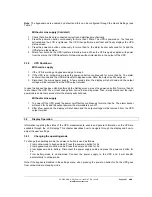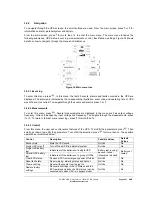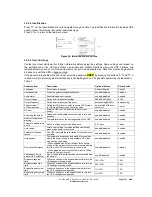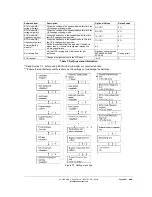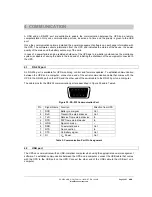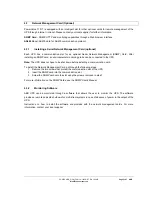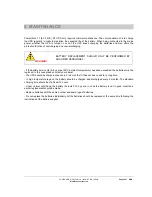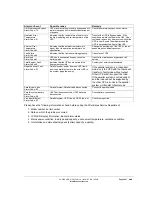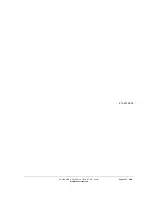
04-3788_ABB_OPM_PVA11 6-10kVA-RT_EN_140423
Page 23/37 ABB
Modifications reserved
Status
Symbol
Description
Online-mode
UPS is running through the inverter (Online-mode)
Battery-mode
UPS running on battery. (The alarm buzzer sounds every 4
seconds.)
Bypass-mode
The power used by the load is supplied from the mains power via
internal filter.
Note that if there is a power failure and the UPS in on bypass, it
will not transfer back to mains or to battery-mode. (This is not the
case if the UPS is in ECO-mode).
In bypass-mode the alarm buzzer will sound every 2 minutes.
Bypass without output
UPS is running through bypass but there is no power in the
output
ECO-mode
(HE: High efficiency-
mode)
After the UPS is turned on, the power used by the load is
supplied from the mains via internal filter if its power is in an
acceptable range. This guarantees higher efficiency of the UPS.
In case of mains failure, the UPS transfers to Online-mode or
Battery-mode and the load is supplied continuously.
Note
: ECO-mode can be enabled through the LCD settings or
through the monitoring software.
Warning
: The transfer time of UPS output from ECO-mode to
battery-mode is 10ms and not recommended for sensitive loads.
Converter-mode
In converter-mode, the UPS runs with fixed output frequency
(50Hz or 60Hz). In case of mains power failure, the UPS
transfers to battery-mode and the load is supplied continuously.
Note:
- Converter-mode function can be enabled through the LCD
settings or the monitoring software.
- The load is de-rated to 70% in converter-mode.
Warning
Warnings indicate abnormal situations that does not stop the
UPS from working. In this case the UPS continues running but
the user should do corrective actions. See Section 6 for details.
Fault
In situations of failure, the UPS may disconnect the load or
transfer to bypass. This depends on the cause of the failure. In
all cases there will be a constant alarm and the backlight of the
UPS becomes red. See Section 6 for details.
Overload
When the UPS is in overload, an alarm sounds twice every
second. Some unnecessary loads should be disconnected one
by one to decrease the load. The load should be lower than 90%
of its nominal power capacity in order to stop alarming.
Battery test
UPS is performing a battery test.
Battery disconnected
The battery is disconnected or defective. The UPS alarm sounds.
3.3
UPS Start-up and Shutdown
Important:
-
The first time the UPS is started up, it must be connected to the utility.
-
Switch off the connected loads before turning on the UPS. Then switch on the loads one by one after
the UPS is turned on. Switch off all of the connected loads before turning off the UPS.
3.3.1 UPS
start-up
With mains supply
1. Check that all cables are connected correctly and well-fixed mechanically.
2. Press the power-on button continuously for more than 1 second. The fans will be activated and the
UPS will load for a few seconds.
3. The UPS will perform a self-test and the LCD will then show the default UPS status summary screen.
















